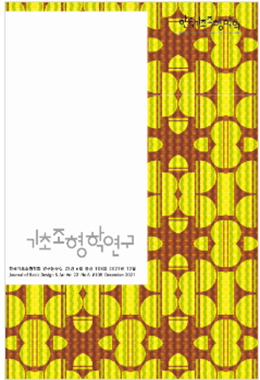위드코로나 환경에 들어서 대학의 원격교육은 대면수업과 병행하여 지속 운영될 것으로 전망된다. 그러나 지난 2년간 가장 어려움이 많았던 전공실습과목의 원격수업 만족도는 크게 개선되지 않았다. 따라서 이 연구는 디자인·콘텐츠 전공 실습과목의 원격수업 학습만족도 제고를 목적으로, 수업참여와 학습만족도에 영향을 미치는 학습자특성을 도출하고자 하였다. 연구내용은 원격교육의 수업참여와 학습 만족도에 영향을 미칠 수 있는 예측 변인으로 학습자특성(그릿, 자기효능감, 과제가치)을 설정하고 원격수업 참여도가 학습자특성과 학습만족도의 관계에 미치는 영향을 분석하였다. 이때 원격수업의 수업유형을 동시적 원격수업과 비동시적 원격수업으로 구분하여 진행하였다. 조사에는 동시적 원격수업과 비동시적 원격수업을 혼합하여 진행하는 6강좌의 수강생 141명이 참여하였으며 36문항에 대해 답변하였다. 분석결과는 다음과 같다; 첫째, 동시적, 비동시적 원격수업 수업참여도는 학습만족도에 긍정적인 영향을 미치는 것으로 나타났는데, 영향력은 비동시적 원격수업에서 더 높게 나타났다. 둘째, 두 유형의 원격수업 모두에서 그릿의 하위 변인인 노력지속력은 학습만족도에 긍정적 영향을 미치는 것으로 나타났다. 자기효능감의 하위 변인인 정보처리 효능감은 동시적 원격수업 수업참여도에 긍정적 영향을 미치며, 자기학습 효능감은 비동시적 원격수업 수업참여도에 긍정적 영향을 미치는 것으로 나타났다. 과제가치는 동시적, 비동시적 원격수업 모두의 수업참여도와 학습만족도에도 긍정적인 영향을 미치는데 그 영향력은 높았다. 셋째, 동시적, 비동시적 원격수업의 수업참여도는 과제가치와 학습만족도의 관계를 부분 매개하는 것으로 나타났고 그 영향력은 녹화된 강의동영상을 시청하는 비동시 원격수업에서 더 높게 나타났다. 이러한 결과는 디자인·콘텐츠 전공 실습과목의 원격수업에서 학생이 가치를 부여할 수 있는 ‘과제설정’의 중요성을 시사한다.
Entering the With COVID-19 environment, remote education at universities is expected to continue to operate in parallel with face-to-face classes. However, the satisfaction of remote classes in major practicum subjects, which had the most difficulties over the past two years, has not improved significantly. Therefore, this study attempted to derive learner characteristics that affect class participation and learning satisfaction for the purpose of improving remote class learning satisfaction of practical subjects majoring in design and content. In this study, learner characteristics (grit, self-efficacy, task value) were set as predictive variables that could affect class engagement (CE) and learning satisfaction (LS) in remote education, and the effect of remote class engagement was analyzed on the relationship between learner characteristics and LS. The class type was divided into synchronous classes (SC) and asynchronous classes (ASC). In the survey, 141 students of 6 lectures, which were conducted in a mixture of synchronous and asynchronous learning, participated and answered 36 questions. The analysis results are as follows; First, it was found that CE in SC and ASC had a positive effect on LS, and the influence was higher in ASC. Second, in both types of distance learning, effort persistence, a sub-variable of grit, was found to have a positive effect on LS. Information processing efficacy, which is a sub-variable of self-efficacy, has a positive effect on CE in SC and self-learning efficacy has a positive effect on CE in ASC. The task value had a positive effect on CE and LS of both SC and ASC and the effects were high. Third, CEs in SC and ASC were found to partially mediate the relationship between task value and LS, and the influence was higher in ASC where lecture videos were viewed. These results suggest the importance of ‘task setting’, in which students can add value, in the design of instructional distance practicum education for the learners of design and contents majors.




